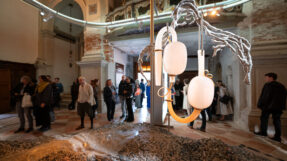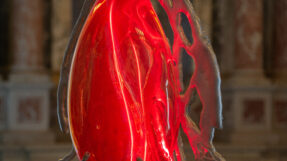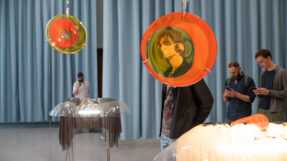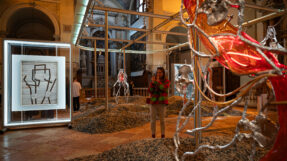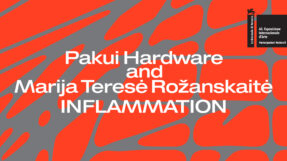The Radvila Palace Museum of Art of the LNMA opens a new exhibition Virtual Care by Pakui Hardware, the artist duo representing Lithuania at the Venice Contemporary Art Biennial: visitors are invited to reflect on the ways of health digitalisation
Exhibition opening at 6 pm Wednesday, 19 June, 2024
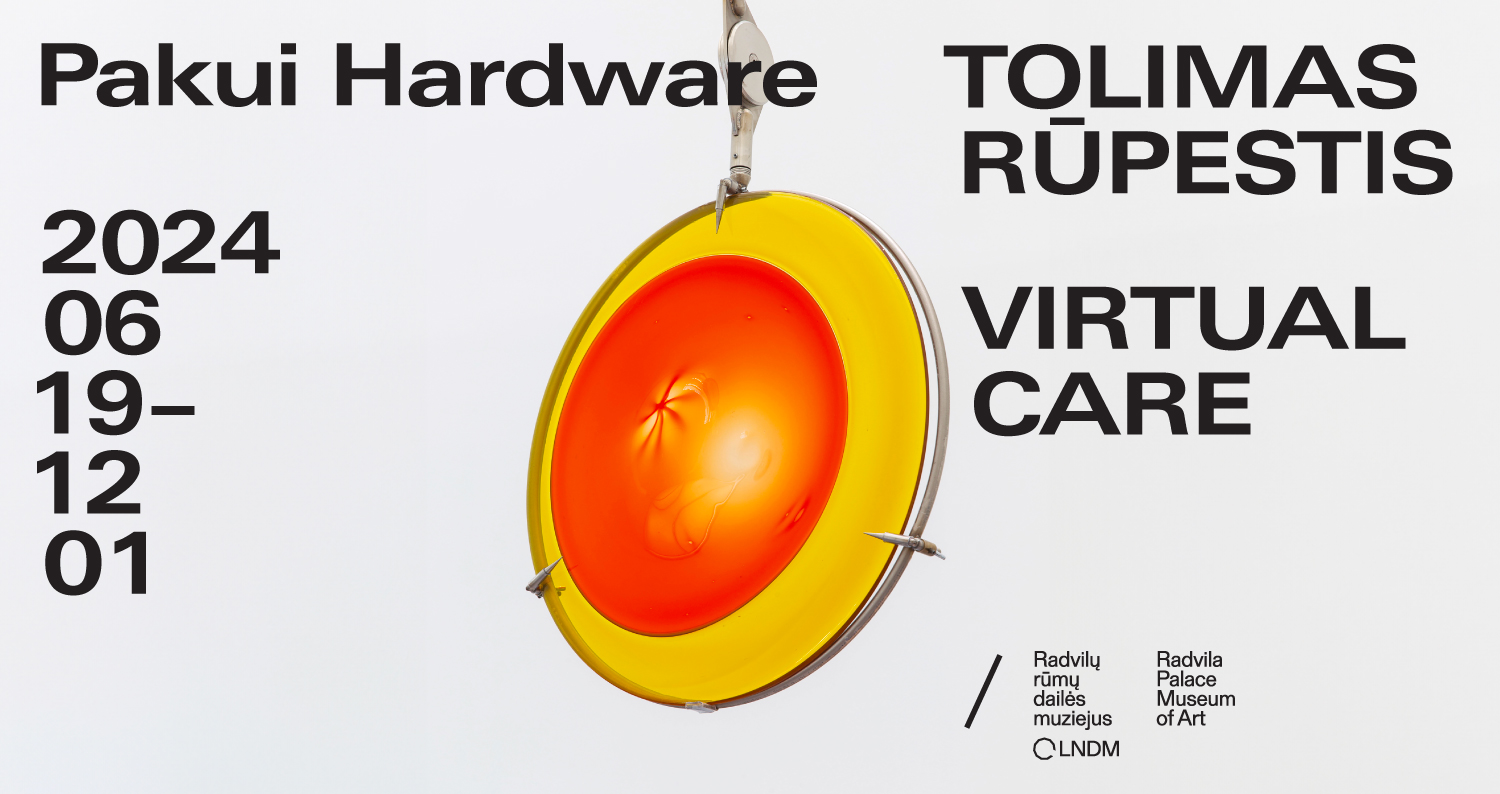 The Radvila Palace Museum of Art of the LNMA opens an exhibition Virtual Care by the artist duo Pakui Hardware, Neringa Černiauskaitė and Ugnius Gelguda, currently with Marija Terese Rožanskaitė (1933 – 2007) representing Lithuania at the Venice Contemporary Art Biennial. The work presented at the Biennale explores an inflammatory effect of the present economic and social conditions on human and planetary bodies and invites to look for possible ways to heal. Their new Vilnius exhibit deals with another aspect of the contemporary health care – robotic surgery and telemedicine. The exhibition will be on until 1 December.
The Radvila Palace Museum of Art of the LNMA opens an exhibition Virtual Care by the artist duo Pakui Hardware, Neringa Černiauskaitė and Ugnius Gelguda, currently with Marija Terese Rožanskaitė (1933 – 2007) representing Lithuania at the Venice Contemporary Art Biennial. The work presented at the Biennale explores an inflammatory effect of the present economic and social conditions on human and planetary bodies and invites to look for possible ways to heal. Their new Vilnius exhibit deals with another aspect of the contemporary health care – robotic surgery and telemedicine. The exhibition will be on until 1 December.
“The artistic practice of Pakui Hardware builds important bridges between Lithuania and key international art spaces. Both the Inflammation by the artist duo and Marija Teresė Rožanskaitė presented by the Lithuanian National Museum of Art at the Venice Biennale and the upcoming Virtual Care at the museum of Radvila Palace immerse the viewer into the most profound aesthetic experience and invite to reflect on imperative medical and technological impact on the human body as well as global utopian and dystopian scenarios for the future. I encourage our audience to respond to this invitation and to visit both, the new contemporary artist duo’s Vilnius event – and the Lithuanian national pavilion in Venice”, Dr Arūnas Gelūnas, director general of the LNMA says.
“This installation by Pakui Hardware, from the LNMA’s collection, is an addition and extension of the artists’ display at the Venice Biennale. Installed in the historic southern wing of the museum, the exhibit strongly resonates with the museum’s early-20th-century architecture; it is also in line with the Radvila Palace museum’s programme to present contemporary art of consequence, capable to address the most urgent issues of contemporary society,” Justina Augustytė, director of Radvila Palace Museum of Art of the LNMA, explains.
Museum space transformed into an operating theatre
The artwork by Pakui Hardware explores how human experience of reality is shaped by economics and technology, by bodies and materials. Their recent works explore forms of contemporary medicine, and the probability of potential futures where the boundaries of physical bodies can be transcended.
“The installation was conceived before the Covid-19 pandemic hit the world with all of its repercussions, when telemedicine was still a niche form of treating the patients. With the pandemic virtual care became the dominant form of getting help from one’s doctor. New reality and artistic visions met in an uncanny fusion”, the artists Černiauskaitė and Gelguda put their work into context.
The installation Virtual Care confronts problems of accessibility to neoliberal healthcare systems by people of lesser means, by those living too far from health services locations or marginalized groups. The technologies of virtual care are perceived as a likely solution to these problems and a possibility for the system to support the most vulnerable individuals by offering technological care.
The exhibition will transform the museum’s historic exhibition room into an atmospheric space, evocative of an operating theatre or a hospital ward, where human presence – excepting the physical body of the visitor – is replaced by technologies. Suspended between physical and virtual, material and digital, the exhibition space is inhabited by transparent thermoshaped sculptural “bodies”.
The impression of fragility under an operating theatre’s lights
The inspiration for the sculpture pieces of the installation came from Marija Teresė Rožanskaitė’s paintings of the 1970s and 80s, blending technology, organic and synthetic materials. Transparent surfaces of the sculpture pieces strike as nearly intangible traces of human “body” or as fragile shells. The microclimate beneath these shells seems to harbor entire colonies of microorganisms.
An operating theatre lamp installed at the very top has its lens, held by the spider-like glass hands, focused on the bodies below. The warm glow of the lens creates the impression of care. Yet the steel hands of the sculpture piece, similar to a surgeon’s hands covered by transparent sleeves, are, by contrast, only cold stranger’s hands. The objects reminiscent of human body organs made of glass are displayed under the surgical light and seem to be prepared for inspection, analysis and judgment.
Organiser: Radvila Palace Museum of Art of the LNMA
Architects: Isora x Lozuraityte Studio
Architect-coordinator: Aleksandras Kavaliauskas
Graphic designer: Vytautas Volbekas
Textual editor and translator: Alexandra Bondarev
Coordinator: Viltė Visockaitė
The artwork was commissioned by the Baltic Centre for Contemporary Art (Gateshead, UK).
Radvila Palace Museum of Art,
24 Vilniaus st, LT-01402, Vilnius, Lithuania
+370 5 250 5824


